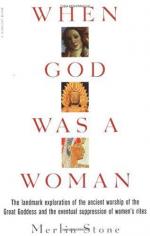|
This section contains 1,536 words (approx. 4 pages at 400 words per page) |

|
Anatolia
The Asian part of modern Turkey, Anatolia is from Neolithic times home to the Great Goddess. When the Indo-Europeans invade in the late fourth/early third century BCE, they blend with the Hatti natives, and become known as the Hittites. The vanguard is aggressive warriors and a priestly caste, which then rule the indigenous peoples, to whom they feel culturally superior. The invasions are as much religious crusades as territorial conquests. Another Indo-European group, the Luvians, live directly south of the Hittites in Cilicia. Little is known about them beyond that they sweep destructively over western Anatolia ca. 2300 BCE, and speak a language related to Hittite. In Roman times, St. Peter preaches in Anatolia against the "defiling passion" of Goddess worship and lectures women to be holy as of old, subjecting themselves to their husbands.
Babylon
The kingdom forms ca. 1900 BCE when the Akkadians supplant the Sumerians...
|
This section contains 1,536 words (approx. 4 pages at 400 words per page) |

|




